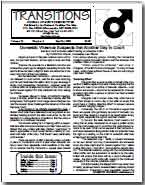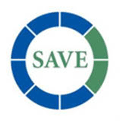In February 2012 the ABS released its Gender Indicators Report accompanied by a media release titled Busy mums want more paid work that completely ignored male disadvantage (see Men’s Health Australia report here).
Today they have redressed this imbalance by releasing their latest Gender Indicators Report with a media release (quoted in full below) titled Men fare worse than women in education, health and crime. Congratulations are due to the ABS for focusing upon the politically unpopular side of the gender coin: men and boys. We will see whether the media release makes it through the lace curtain and gets picked up by the mass media or not.
MEDIA RELEASE | 27 July 2012 | Embargo: 11.30 am (Canberra Time) | 109/2012
Men fare worse than women in education, health and crime
Men continue to fare worse than women in education, health and crime, according to a new report released today by the Australian Bureau of Statistics (ABS).
The report – Gender Indicators, Australia (cat. no. 4125.0) – analyses ABS and non-ABS data to look at the differences between men and women, and how the differences are changing over time.
Today’s release highlights that in 2011, 75% of boys entering high school were likely to be studying until Year 12, compared to 84% for girls.
The report also showed that this gap continues into adult life with only 30% of men aged 25-29 years having completed a bachelor degree or higher compared to 41% of women of the same age. For those that completed a Certificate III or above, the gap was smaller – 60% of men and 67% of women. Men are more likely than women to complete a Certificate III and IV as their pathway into employment.
On the health front, males were more than three times as likely as females to die from suicide, nearly three times more likely to die in a car accident, and one and a half times more likely to die from cancer. Heart disease remains the leading cause of death for males and females – however the rate is higher for males and the gap between males and females has increased since 2001.
The suicide rate for males was highest in the age group 35-44 years and in 2010 males made up over three-quarters (77%) of all suicides.
While fatal car accidents have dropped for both males and females over the last ten years, the death rate is nearly three times as high for males. Between 2001 and 2010 the rate for males fell from 15 deaths per 100,000 persons to 9.4 for males compared to a drop from 5.0 to 3.3 for females.
Cancer is another leading killer of males, at about one and a half times the rate of females (224.2 per 100,000 for males and 139.0 for females in 2010).
Men are also more likely to have contact with the criminal justice system than women. In 2010-11, men were up to one-and-a-half times more likely be the victims of physical or threatened assault or robbery than women. Men that experienced physical or face-to-face threatened assault were less likely to tell the police about the incident than were women.
Males were nearly four times more likely to commit offences intended to cause injury, more than six times more likely to commit robbery and more than 28 times more likely to commit sexual assault. However, the male victimisation rate for sexual assault was about one-sixth that of females in 2011.
More than thirteen times as many men were in prison in 2011 than women (27,078 men, 2,028 women).
The third release of Gender Indicators also contains new information on men and women living in low economic resource households. In 2009-10 18% of men and 20% of women were living in a low economic resource household.
To see the full range of indicators, and changes over time, see the full online product, Gender Indicators, Australia (cat. no. 4125.0). Further information about causes of death can be found in the Explanatory Notes section of Causes of Deaths, Australia (3303.0).
If you or someone you know is thinking about suicide, call Lifeline (13 11 14), Suicide Call Back Service (1300 659 467) or Kids Helpline (for young people aged 5 to 25 years) (1800 551 800).
Source: Men fare worse than women in education, health and crime (http://www.abs.gov.au/ausstats/abs@.nsf/Lookup/by%20Subject/4125.0~Jul%202012~Media%20Release~Men%20fare%20worse%20than%20women%20in%20education,%20health%20and%20crime%20(Media%20Release)~6152#) by ABS


